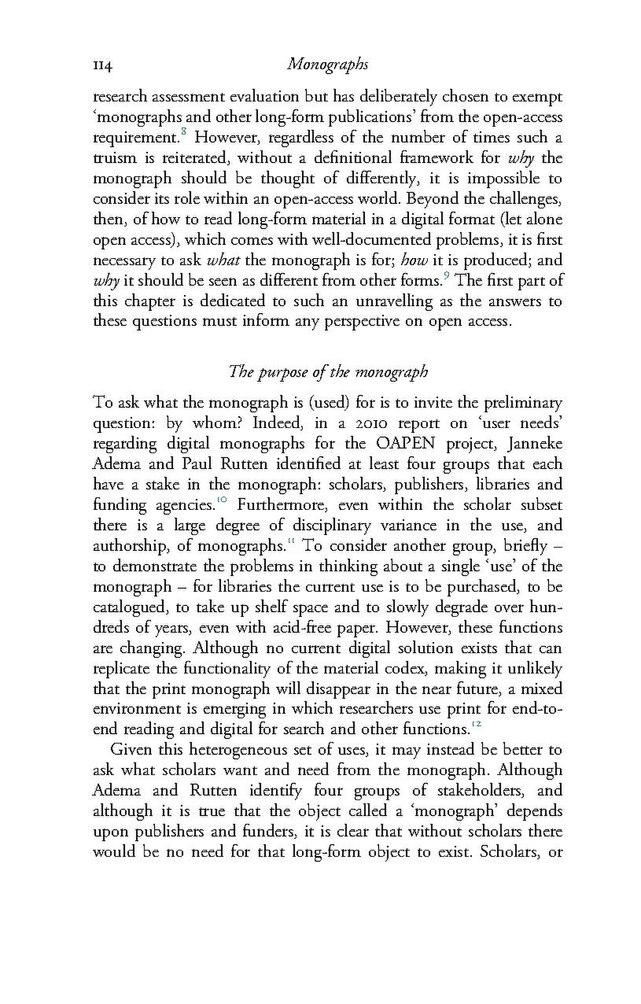research assessment evaluation but has deliberately chosen to exempt ‘monographs and other long-form publications’ from the open-access requirement.8 However, regardless of the number of times such a truism is reiterated, without a definitional framework for why the monograph should be thought of differently, it is impossible to consider its role within an open-access world. Beyond the challenges, then, of how to read long-form material in a digital format (let alone open access), which comes with well-documented problems, it is first necessary to ask what the monograph is for; how it is produced; and why it should be seen as different from other forms.9 The first part of this chapter is dedicated to such an unravelling as the answers to these questions must inform any perspective on open access.
The purpose of the monograph
To ask what the monograph is (used) for is to invite the preliminary question: by whom? Indeed, in a 2010 report on ‘user needs’ regarding digital monographs for the OAPEN project, Janneke Adema and Paul Rutten identified at least four groups that each have a stake in the monograph: scholars, publishers, libraries and funding agencies.10 Furthermore, even within the scholar subset there is a large degree of disciplinary variance in the use, and authorship, of monographs.11 To consider another group, briefly – to demonstrate the problems in thinking about a single ‘use’ of the monograph – for libraries the current use is to be purchased, to be catalogued, to take up shelf space and to slowly degrade over hundreds of years, even with acid-free paper. However, these functions are changing. Although no current digital solution exists that can replicate the functionality of the material codex, making it unlikely that the print monograph will disappear in the near future, a mixed environment is emerging in which researchers use print for end-toend reading and digital for search and other functions.12
Given this heterogeneous set of uses, it may instead be better to ask what scholars want and need from the monograph. Although Adema and Rutten identify four groups of stakeholders, and although it is true that the object called a ‘monograph’ depends upon publishers and funders, it is clear that without scholars there would be no need for that long-form object to exist. Scholars, or
